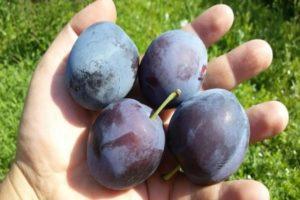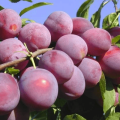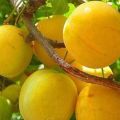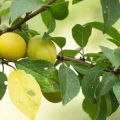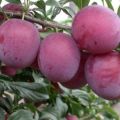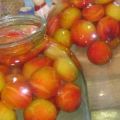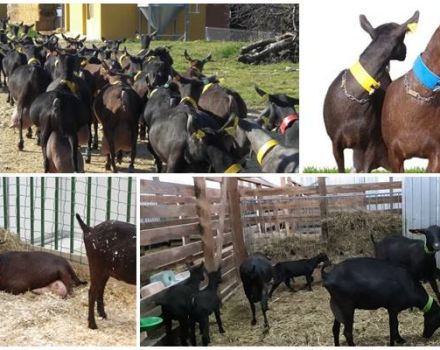Description and characteristics of the Tsarskaya cherry plum variety, cultivation and care
Among the fruit trees on the garden plot, the Tsarskaya cherry plum rightfully occupies a worthy place. The fruits are pleasant with a sweet taste, the tree pleasantly surprises with its resistance to frost and resistance to diseases, the harvest is striking in abundance and regularity. And simply the Tsar's cherry plum pleases the eye in the spring, covered with a cap of white flowers, and in the summer, when the bright yellow fruits ripen.
The history of breeding cherry plum Tsar
A variety of hybrid cherry plum called Tsarskaya was bred by Russian scientists in the last century. The progenitor was the hybrid cherry plum or, in other words, the plum Russian variety Kuban comet, which, in turn, is the result of crossing the Chinese plum and cherry plum. In the course of selection, the properties of the original plants have been significantly improved.
Description of culture
Fruit trees of the Tsarskoy Cherry plum variety of medium height with a flat-round crown. Distinctive features describing the variety are presented below.
| Parameter | Description |
| Tree height | Up to 2.5-3 m |
| Crown characteristics | Compact, medium density |
| Crown radius | 1.5 m |
| Flowers | White, fragrant |
| Fruit: shape | Spherical |
| Fruit: color | Yellow |
| Fruit: mass | 18-25 g |
| Taste | Sweet, sour |
| Yield | 20-25 kg per tree |
| Ripening period | Second half of July - early August |
| The beginning of fruiting | For the second summer after landing |
Tree characteristics
The trees of this variety, with their light green foliage above the trunk covered with dark gray-brown bark and a beautifully shaped crown, are not only very decorative, but also pleasantly surprise with their characteristics.
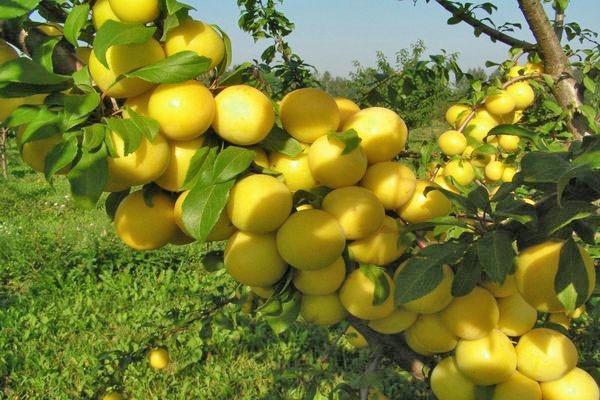
Variety resistance: to frost and dry climate
Tsar's cherry plum has satisfactory frost resistance. The aboveground part tolerates frosts down to -30 degrees, but the root system may suffer if the tree is not covered in frosty winter. The variety does not tolerate the lack of moisture very well, therefore regular watering is necessary.
What pests and diseases is the variety susceptible to?
The hybrid cherry plum is considered resistant to many diseases.Nevertheless, you should carefully examine the plant, and at the slightest sign of parasite or disease activity, take action by treating it with special preparations. We must not forget about preventive measures. The main threats to this fruit tree are as follows:
| Disease / pest | What is defeated |
| Moniliosis | Trunk, leaves and branches |
| Rust | leaves |
| Powdery mildew | Leaves, shoots and trunks |
| Zabolotnik | Wood of branches and trunks |
| Downy silkworm | Tree foliage |
| Fruit moth | Fruit |
Pollination and flowering period
The trees of this variety are self-fertile. This means that for fruit formation, trees capable of pollination must grow nearby. The best pollinators are self-fertile cherry plum varieties.
During the flowering period, insects are still not very active, since it occurs in early spring, and the weather is still cool. In this regard, pollinating trees are placed within 3 meters. During lush flowering, the Tsarskaya cherry plum tree looks elegant and perfectly performs a decorative function.
Productivity and fruiting
The tree bears up to 25 kg of fruit per season, which makes it a high-yielding variety. The fruits of the Tsar's cherry plum are fragrant, covered with a shiny waxy skin, the flesh is yellow. Ripen by early August, a year after planting the tree.
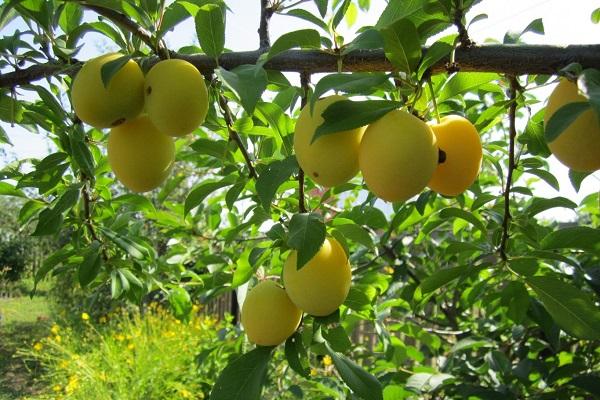
Where is the plum crop used?
After harvesting, they prepare jam, compote, juice, and use it as a filling for pies. The fruits of this variety can be dried or used for making wine. But fresh cherry plum is tastier and healthier, as it contains many vitamins and minerals.
Main pros and cons
The variety has many advantages. These include the following:
- Productivity. Under favorable conditions, 20-25 kg are collected from the tree.
- Early maturity. The crop is harvested in the second year after planting.
- Decorativeness. The tree is especially beautiful in spring during flowering, it looks great and is covered with yellow fruits.
- Resistance to pests and diseases.
- The fruits of the Tsar's cherry plum tolerate storage and transportation well.
- Harvested benefits, taste.
- Frost resistance of the aboveground part of the tree.
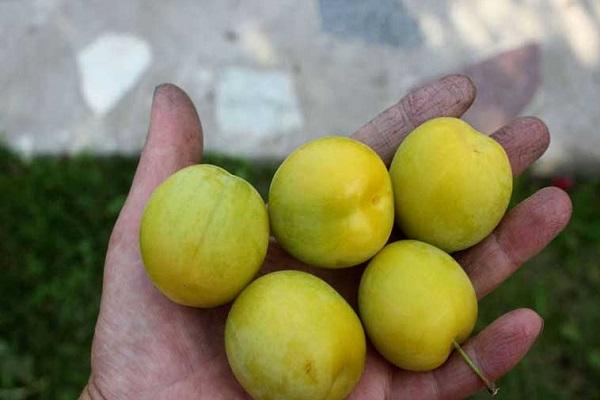
When growing hybrid cherry plum, you should remember the following disadvantages:
- Self-infertility. It is required to plant pollinating trees nearby.
- Poor drought tolerance. Needs regular watering.
- The roots do not tolerate frost below -10 degrees. You need to cover for the winter.
- Forms a lot of root growth.
The nuances of planting a tree on the site
In order for the seedling to take root and consistently please with a high yield, a number of nuances are taken into account when planting. An experienced gardener first of all determines the site for placing a tree, carefully prepares it, pays special attention to the choice of a promising seedling.
Terms of planting works
It is best to plant the tree in early spring, before the buds swell. As a rule, this is April or May.
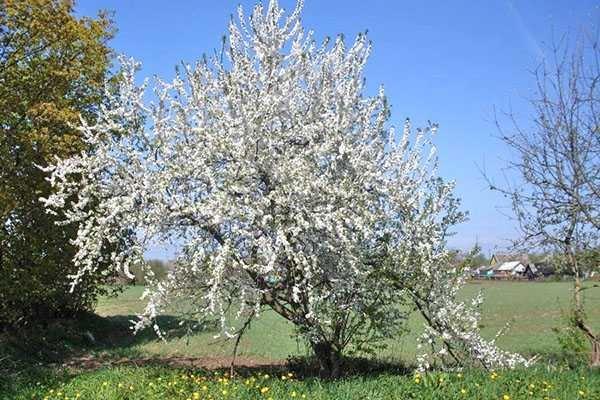
Selection and preparation of a seedling
Annual or biennial plants are recommended for planting. When buying, the planting material is examined for the integrity of the integument and the presence of fungal diseases. The root system should consist of 5-6 shoots of 20-30 cm each.
Decide on the placement of the plum
It is important to pay attention to the groundwater at the site, their level should not be higher than one and a half meters. It is advisable to plant on the south side of the house so that the tree is protected from the wind, but at the same time it is well lit. The soil is suitable for light, loamy, sufficiently drained.
Site preparation and planting pit
The selected area is cleared of weeds and dug up, applying fertilizers with insufficient fertility. If the soil is acidic, add ash when digging. A hole with a diameter of 60 cm and a depth of 70 cm is dug in advance so that the soil shrinks. A drainage layer is laid on the bottom. A mound is formed from the soil mixed with fertilizers.
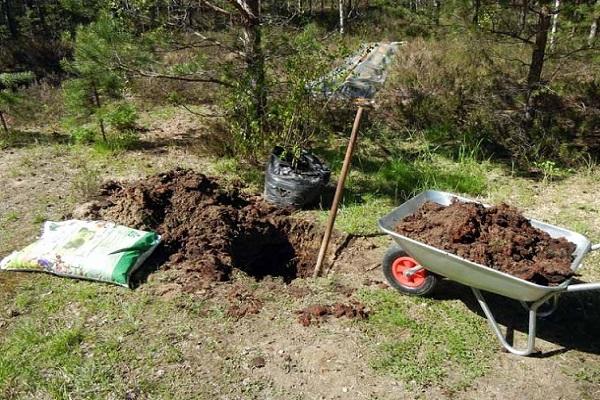
Step-by-step planting process
Step by step guide:
- The roots of the seedling are coated with clay.
- The tree is planted in a prepared hole, carefully spreading the roots on a mound at the bottom of the hole.
- Fill the hole with a mixture of soil with top dressing, tamping it. The soil level should be such that the root collar rises by 6-7 cm.
- Water the tree with several buckets of water along the near-trunk circle into the formed hole.
- The planted plant is mulched with a mixture of compost or peat with lime or dolomite flour.
We organize care of young and adult plants
In order to receive a reward for labor in the form of a good harvest, the gardener must provide the young seedling, and then the adult tree, with proper care. Cherry cherry plum must be watered in a timely manner and regularly, fed, cut and covered for the winter.
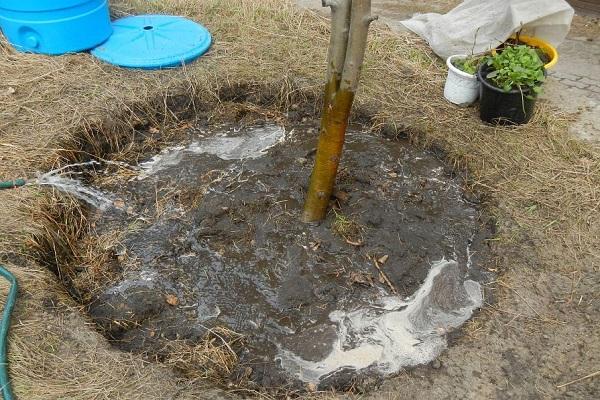
Watering table
The tree does not tolerate stagnant groundwater, but needs a sufficient amount of moisture. The hybrid cherry plum is watered every 10 days, 5 buckets of water per plant. After watering, the soil is loosened to retain moisture.
Top dressing schedule
Fertilizers are applied a year after planting the tree, if it was fed when placed in the planting pit.
| Period | Fertilizer type, indicating the approximate amount per square meter |
| Spring digging | Humus or humus - 5 kg. Urea - 60 g |
| Before flowering | Potassium sulfate - 40 g. Urea - 40 g |
| Pouring fruit | Nitrofoski - 30 g. Urea - 30 g |
| After harvest | Superphosphate - 35 g. Potassium sulfate - 35 g |
| Autumn digging | Humus or humus - 5 kg. Urea - 60 g |
Crown formation
To preserve the yield and health of the Tsarskaya cherry plum tree, regular pruning is required, which is done in early spring every year. When planting a tree, one third of the length of all branches is removed. Every year, up to 4 strong branches are left, cutting off all the rest. In the fifth year, the central conductor is cut off. Every year, shoots more than 50 cm long and branches that have bent to the ground under the weight of the fruit are removed.

Barrel circle care
The soil around the trunk of the Tsar's cherry plum needs to be loosened and weeded regularly. So that the earth does not lose moisture, it is mulched with humus or peat. To protect against pests, you can plant marigolds, calendula, wormwood, tansy near the tree. They will scare off butterflies and moth caterpillars.
Shelter for the winter
The root system of Tsarskoy cherry plum does not withstand frosts below -10 degrees, the tree must be covered. In winter, snow is thrown around the trunk. The trunk circle is mulched with manure. The lower part of the trunk is wrapped in an air and moisture permeable covering material. Roofing material or film is not recommended. Having wrapped the trunk with nylon, the gardener will provide protection from rodents.
Tree propagation methods
For vegetative propagation of Tsarskaya cherry plum, grafts are used, performed according to various technologies, as well as different types of cuttings.

Green cuttings
In the middle of summer, cuttings 10 cm long are obtained, cutting off fresh shoots of growth just below the bud. 2-3 leaves remain on the branch, the lower one is removed. The stalk is rooted after soaking in a growth promoter. The root system is formed in a month.
Method of lignified cuttings
During the autumn leaf fall, cuttings 20-25 cm long are harvested for planting in spring. They are cut from annual shoots, removing leaves and side shoots. The blanks are stored in winter, treated with molten paraffin.
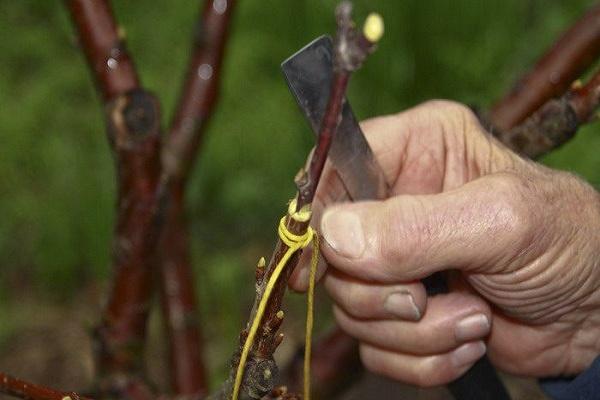
Vaccinations
Grafting is a method of propagation in which parts of several plants are combined. In this case, the stock is a plant to which they are grafted, the stem and root system are used from it. The graft is what is grafted: it can be a shoot, a stem, buds. There are many grafts, and variations continue to increase, because gardeners, without stopping, are looking for new ways to increase yields and improve varieties.
At the location of the vaccination there are top and side:
- If the "native" top of the rootstock tree is removed, and a scion takes its place, the graft is called a horse graft.
- When the top of the stock is not cut, the graft is located on the side of the trunk, it is a side graft.
The following types of vaccinations are distinguished:
- Ablactation - grafting with a "whole plant". Two trees growing side by side are spliced, then they are separated. The graft remains to grow on the rootstock, and the cultivar remains separately.
- Vaccination by cuttings or shoot. There are many options for grafting with one or more cuttings.
- Budding is a type of vaccination when an "eye" or one kidney is taken.
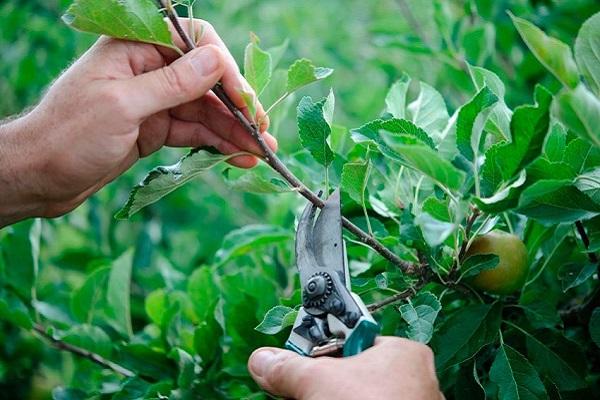
Budding is very popular with gardeners. The method is convenient because it is performed quickly and requires a minimum amount of scion material. For budding, it is necessary that juices move actively in the stock, and this happens in early spring and towards the end of summer. A variety of techniques are used when performing a single kidney vaccination. Among the most common are buttstock and a flap in a T-shaped cut.
Cherry plum Tsarskaya is undoubtedly of interest to gardeners who can appreciate all the advantages of this hybrid variety. If you remember and follow the simple requirements for caring for a tree, then you can admire its beauty for more than one year and enjoy the juicy fruits.

